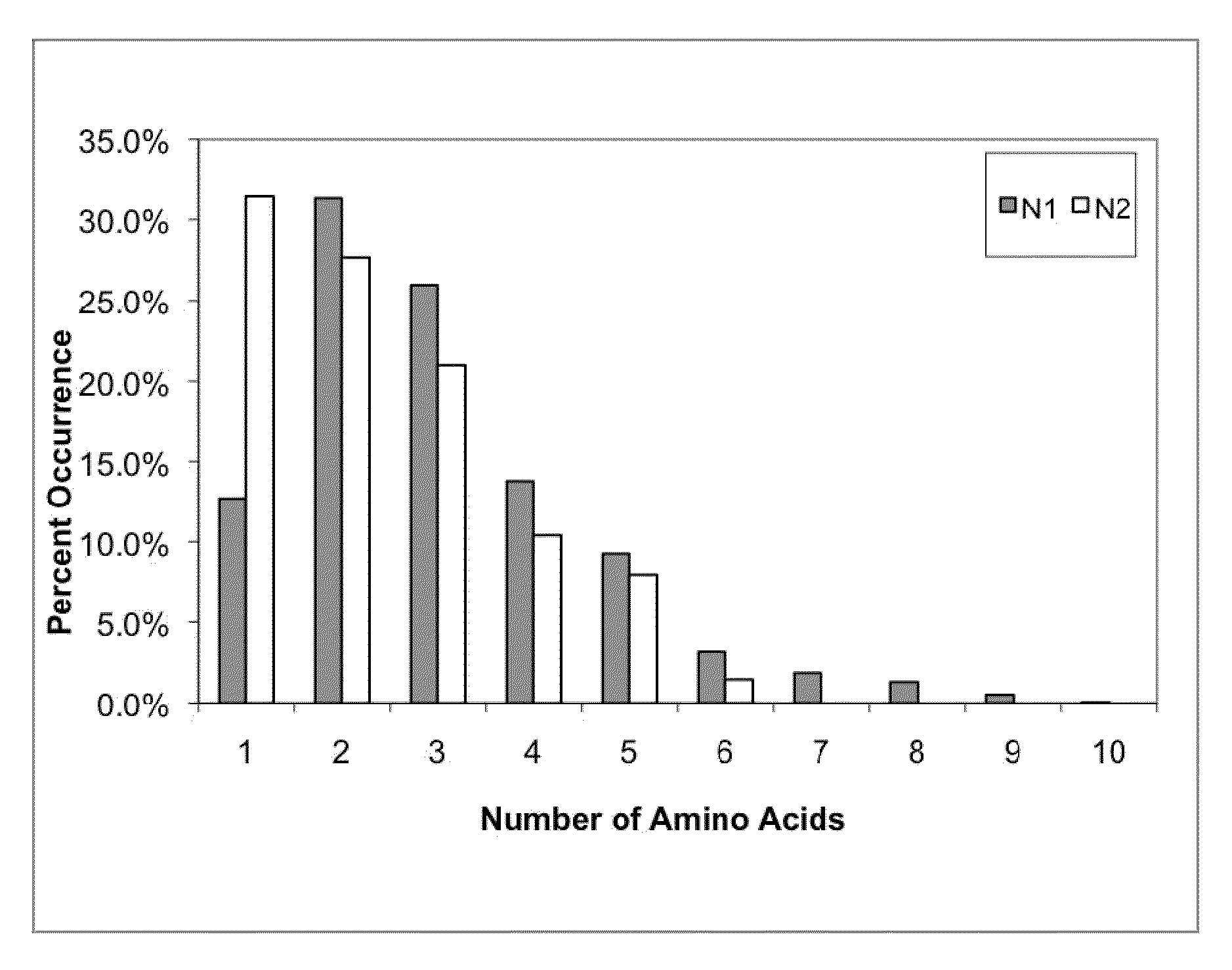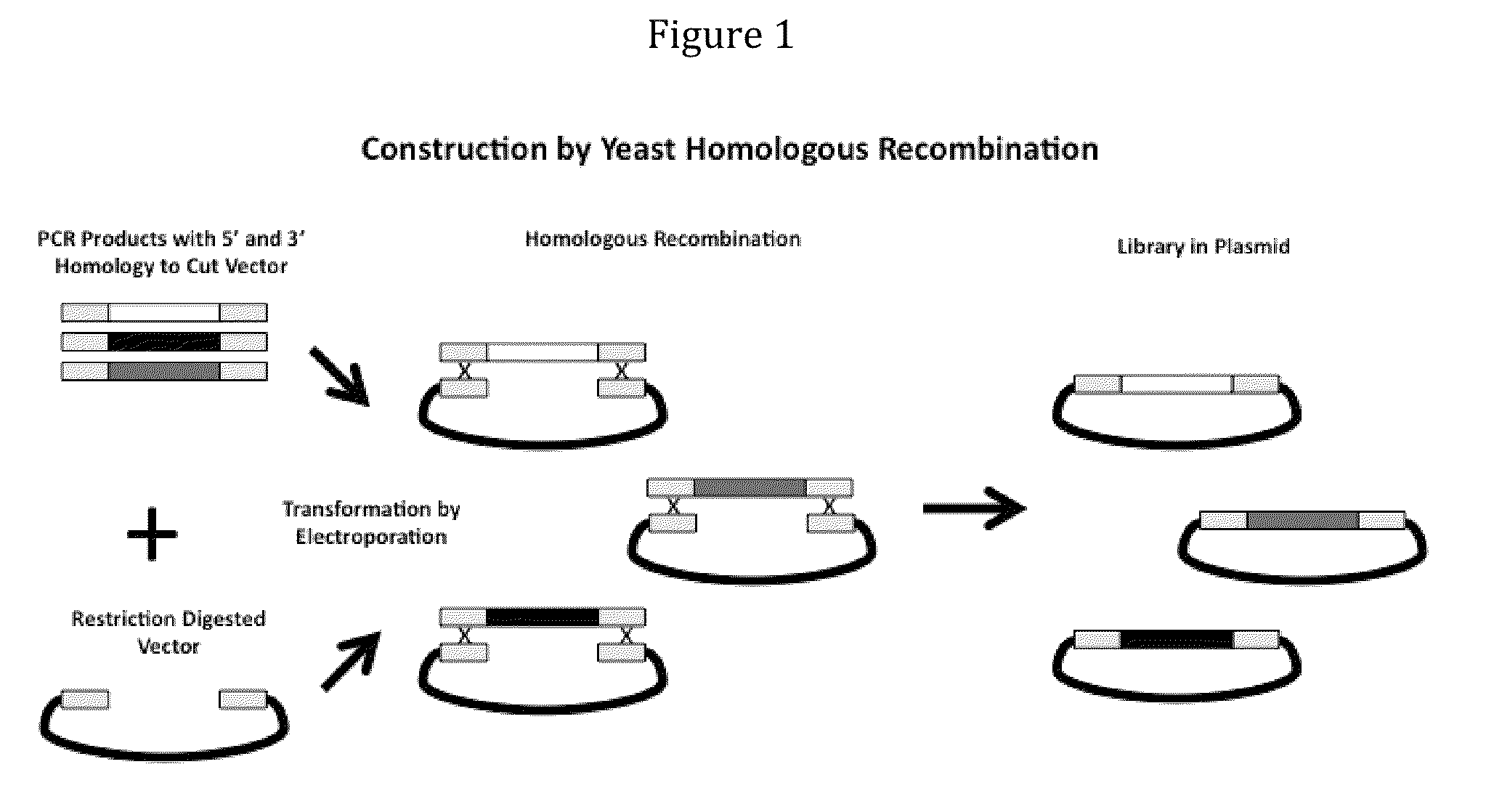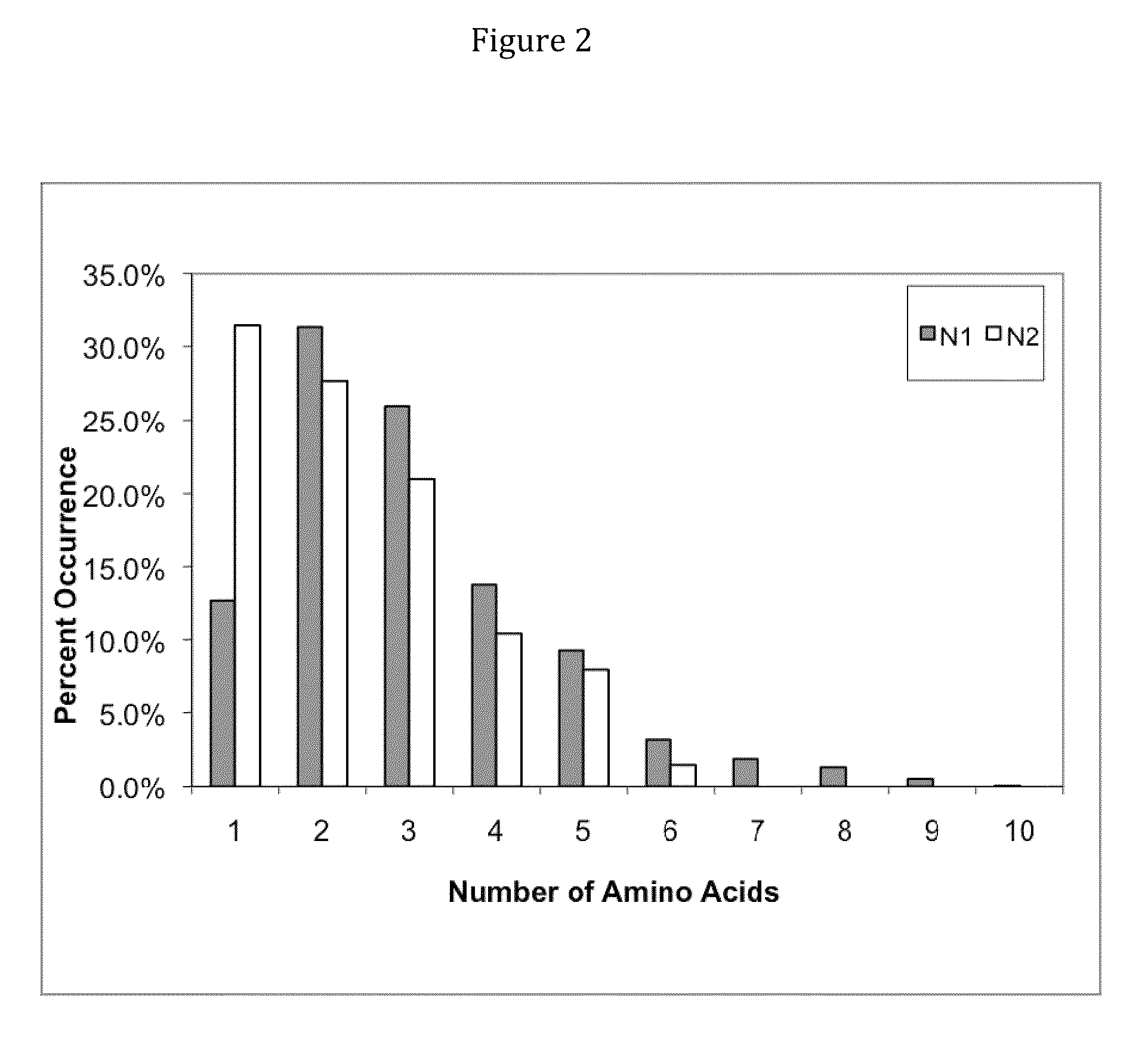Rationally designed, synthetic antibody libraries and uses therefor
a synthetic antibody and library technology, applied in the field of rational design of synthetic antibody libraries and uses therefor, can solve the problems of difficult identification of useful antibodies, limited application range, and often considerable redesign or ‘humanization’ of antibodies
- Summary
- Abstract
- Description
- Claims
- Application Information
AI Technical Summary
Benefits of technology
Problems solved by technology
Method used
Image
Examples
example 1
Design of an Exemplary VH Chassis Library
[0431]This example demonstrates the selection and design of exemplary, non-limiting VH chassis sequences of the invention. VH chassis sequences were selected by examining collections of human IGHV germline sequences (Scaviner et al., Exp. Clin. Immunogenet., 1999, 16: 234; Tomlinson et al., J. Mol. Biol., 1992, 227: 799; Matsuda et al., J. Exp. Med., 1998, 188: 2151, each incorporated by reference in its entirety). As discussed in the Detailed Description, as well as below, a variety of criteria can be used to select VH chassis sequences, from these data sources or others, for inclusion in the library.
[0432]Table 3 (adapted from information provided in Scaviner et al., Exp. Clin. Immunogenet., 1999, 16: 234; Matsuda et al., J. Exp. Med., 1998, 188: 2151; and Wang et al. Immunol. Cell. Biol., 2008, 86: 111, each incorporated by reference in its entirety) lists the CDRH1 and CDRH2 length, the canonical structure and the estimated relative occur...
example 2
Design of VH Chassis Variants with Variation within CDRH1 and CDRH2
[0442]This example demonstrates the introduction of further diversity into the VH chassis by creating mutations in the CDRH1 and CDRH2 regions of each chassis shown in Example 1. The following approach was used to select the positions and nature of the amino acid variation for each chassis: First, the sequence identity between rearranged human heavy chain antibody sequences was analyzed (Lee et al., Immunogenetics, 2006, 57: 917; Jackson et al., J. Immunol. Methods, 2007, 324: 26) and they were classified by the origin of their respective IGHV germline sequence. As an illustrative example, about 200 sequences in the data set exhibited greatest identity to the IGHV1-69 germline, indicating that they were likely to have been derived from IGHV1-69. Next, the occurrence of amino acid residues at each position within the CDRH1 and CDRH2 segments, in each germline family selected in Example 1 was determined. For VH1-69, th...
example 3
Design of an Exemplary VK_Chassis Library
[0452]This example describes the design of an exemplary VK chassis library. One of ordinary skill in the art will recognize that similar principles may be used to design a Vλ library, or a library containing both VK and Vλ chassis. Design of a Vλ chassis library is presented in Example 4.
[0453]As was previously demonstrated in Example 1, for IGHV germline sequences, the sequence characteristics and occurrence of human IGKV germline sequences in antibodies from peripheral blood were analyzed. The data are presented in Table 9.
[0454]
TABLE 9IGKV Gene Characteristics and Occurrence in Antibodiesfrom Peripheral BloodEstimatedRelativeOccur-rence inAlternativeCDRL1CDRL2CanonicalPeripheralIGKV GeneNamesLengthLengthStructures1Blood2IGKV1-05L121172-1-(U)69IGKV1-06L111172-1-(1)14IGKV1-08L91172-1-(1)9IGKV1-09L81172-1-(1)24IGKV1-12L5, L191172-1-(1)32IGKV1-13L4, L181172-1-(1)13IGKV1-16L11172-1-(1)15IGKV1-17A301172-1-(1)34IGKV1-27A201172-1-(1)27IGKV1-33O8, ...
PUM
| Property | Measurement | Unit |
|---|---|---|
| doubling time | aaaaa | aaaaa |
| doubling time | aaaaa | aaaaa |
| doubling time | aaaaa | aaaaa |
Abstract
Description
Claims
Application Information
 Login to View More
Login to View More - R&D
- Intellectual Property
- Life Sciences
- Materials
- Tech Scout
- Unparalleled Data Quality
- Higher Quality Content
- 60% Fewer Hallucinations
Browse by: Latest US Patents, China's latest patents, Technical Efficacy Thesaurus, Application Domain, Technology Topic, Popular Technical Reports.
© 2025 PatSnap. All rights reserved.Legal|Privacy policy|Modern Slavery Act Transparency Statement|Sitemap|About US| Contact US: help@patsnap.com



